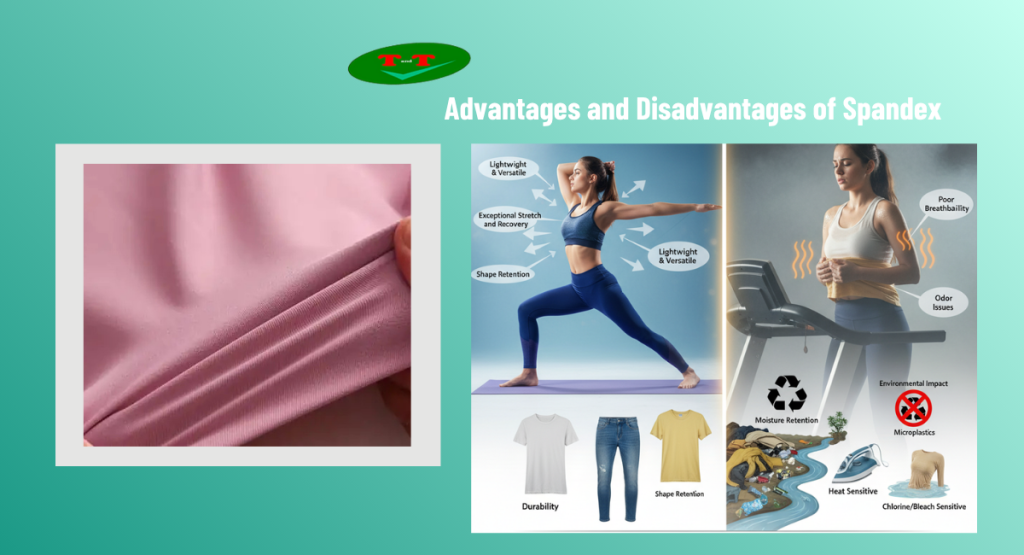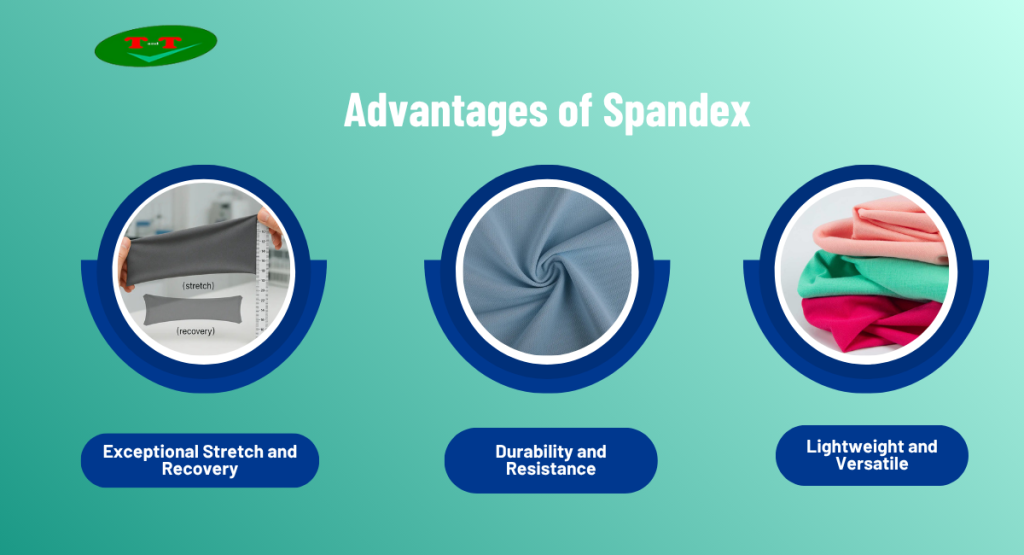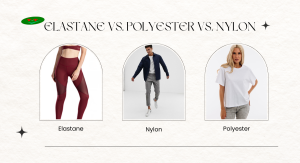Spandex is one of the most widely used elastic fibers in the textile and apparel industry. This article analyzes the Advantages and Disadvantages of Spandex to help manufacturers and sourcing managers understand when and how to use this fiber effectively.

Advantages of Spandex
Spandex, known for its exceptional stretch, comfort, and versatility, enhances the performance of fabrics used in sportswear, underwear, denim, swimwear, and more.

Exceptional Stretch and Recovery
The most defining strength of spandex is its unparalleled elasticity. Spandex can stretch up to 400–700% of its original length and return to its initial shape without permanent deformation.
This makes the fiber ideal for garments requiring freedom of movement, such as activewear, cycling gear, yoga leggings, and compression garments. The stretch recovery of spandex helps maintain garment fit over time, even after repeated wear and washing.
Durability and Resistance
Spandex is highly resistant to abrasion, sweat, and body oils, making it more durable than many natural elastic alternatives. It can withstand repeated movements and pressure without breaking, which helps extend the life of fabrics. When blended with other fibers, spandex reinforces the fabric structure and prevents sagging, wrinkling, and deformation.
Lightweight and Versatile
Spandex is extremely lightweight and blends well with fibers like cotton, polyester, nylon, and modal. Typically, only 2–20% spandex is needed in a fabric blend to significantly enhance elasticity and comfort. Its versatility allows textile manufacturers to adapt it to weaving, knitting, or circular knitting applications without adding weight or bulk to the final product.
Thanks to its exceptional stretch, durability, and versatility in blending, spandex has become an essential component in modern textile manufacturing. When combined with polyester, it delivers high elasticity for sportswear, activewear, and performance garments. Blended with cotton, it enhances comfort and allows everyday products like jeans, T-shirts, and underwear to maintain shape and fit. Today, even a small percentage of spandex yarn significantly improves fabric performance, making it a must-have for both functional and fashion-focused applications.
Disadvantages of Spandex
While spandex offers many benefits, it also comes with certain limitations that affect product design, durability, and sustainability.

Poor Breathability
Spandex on its own is not breathable. Fabrics with a high spandex percentage can trap heat and reduce airflow, which may cause discomfort during prolonged wear. This is why spandex is rarely used as a single fiber — it must be blended with breathable materials such as cotton or polyester mesh.
Environmental Impact
Spandex is a synthetic, petroleum-based fiber that is not biodegradable. The manufacturing process involves chemicals such as polyurethane, contributing to environmental concerns. Waste fabric and microplastics from spandex blends can accumulate in landfills or waterways, making end-of-life recycling difficult.
Heat and Bleach Sensitivity
Spandex is sensitive to high temperatures, chlorine, and bleach. Exposure to excessive heat from dryers or irons can weaken the fiber structure and cause yellowing. Chlorine from swimming pools can degrade spandex over time, which is why high-chlorine-resistant swimwear blends often use specialized yarns or protective coatings.
Moisture Retention and Odor Issues
Spandex has low moisture-wicking ability and can retain sweat and odor when used in high amounts. If not blended properly with functional fibers (polyester with wicking finish, antimicrobial nylon), garments may develop unpleasant odor more rapidly, especially during intense physical activities.
Conclusion
Understanding the Advantages and Disadvantages of Spandex helps fabric developers and apparel brands choose the right blend for each application. While spandex delivers unmatched stretch, shape retention, and comfort, it requires careful handling and thoughtful blending due to heat sensitivity and environmental concerns.
Looking for reliable spandex yarn suppliers or optimized spandex blends for your product line? Contact us for technical support, application guidance, and competitive pricing.
TANI THREAD CO., LTD
- Address: Thanh Hoa Hamlet, Thanh Dien Commune, Chau Thanh District, Tay Ninh Province, Vietnam
- Hotline: 0984.841.239
- Email: sale@tanithread.com
- Website: tanithread.com
- Fanpage: Tani Thread



